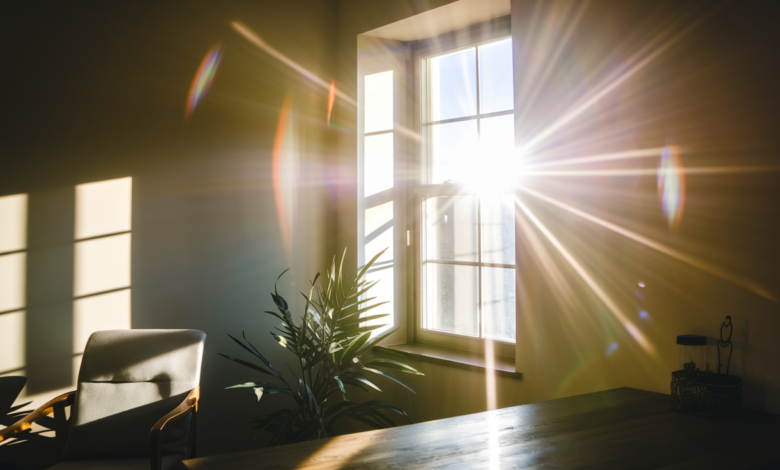Understanding Photeeq Lens Flare: A Comprehensive Guide

If you’re a photography enthusiast or a professional photographer, you know that capturing the perfect shot involves more than just pressing a button. Lighting, composition and even small effects can dramatically change the mood and quality of a photo. One of the more intriguing effects that photographers often encounter is [photeeq lens flare]. While lens flare can sometimes seem like an unwanted distraction, it can also add a unique and artistic touch to your images when used intentionally. In this article, we will explore the concept of [photeeq lens flare], what it is, how it happens, and how to manage it in your photography.
What is Photeeq Lens Flare?
[Photeeq lens flare] is a visual phenomenon that occurs when light enters the camera lens and bounces off various internal lens elements. This effect can create visible spots or streaks of light in your photos. These spots often appear as bright, circular light blobs or lines that sometimes obscure part of the image.
While lens flare is typically associated with sunlight or other strong light sources, it can also happen with artificial lighting or reflections. The exact appearance of lens flare depends on various factors, including the quality of your lens, the angle of the light, and your camera settings.
Why Does Photeeq Lens Flare Happen?
To fully understand [photeeq lens flare], it’s important to know why it occurs. Essentially, lens flare happens when light passes through your lens and scatters inside. This scattering creates colorful artifacts in the image. The phenomenon can be influenced by:
- Lens design: Lenses with more elements tend to create more flare due to the extra surfaces where light can reflect.
- Light source position: When light enters the lens at an angle, the flare effect is more likely to occur.
- Aperture settings: A wide aperture, such as f/2.8, can increase the likelihood of flare.
- Filters and lens coatings: Lenses with anti-reflective coatings can help reduce lens flare.
Understanding these factors allows photographers to control [photeeq lens flare] either to prevent it or to use it creatively.
The Different Types of Lens Flare
Not all [photeeq lens flare] effects look the same. There are a few different types of lens flare that you might encounter, each with its unique visual characteristics. Here’s a breakdown of the most common types:
- Ghosting
Ghosting is a phenomenon where you see a series of faint, overlapping images in your shot. This is usually caused by light reflecting off the internal surfaces of the lens elements. Ghosting can sometimes be distracting, but it can also add an ethereal, surreal quality to an image when used intentionally.
- Streaks and Halos
When light hits the lens at a particular angle, you might notice streaks or halos in your photos. These streaks often appear as colorful lines that extend from a light source and can give the impression of motion or energy.
- Circular Bokeh
This type of [photeeq lens flare] appears as a soft, glowing circle around bright light sources. It’s especially noticeable when there’s a light source in the background of your shot, and it can create a dreamy, artistic effect.
- Spots and Artifacts
Sometimes lens flare appears as spots or bright blobs of light that show up in your photos, particularly in areas where you’ve captured strong light sources. These spots can vary in size and color and may give the image a washed-out look.
How to Control Photeeq Lens Flare
For many photographers, controlling [photeeq lens flare] is essential, especially when you want to avoid overexposed areas or distracting light spots in your photos. Here are some strategies to help you manage lens flare:
- Use a Lens Hood
One of the simplest and most effective ways to prevent lens flare is by using a lens hood. This accessory attaches to the front of your lens and helps block stray light from entering at an angle. By reducing the amount of light that hits the lens, a lens hood can minimize unwanted flare.
- Change Your Angle
Lens flare is more likely to occur when you point your camera directly at a bright light source. To reduce the flare, try changing your shooting angle slightly. Moving the camera just a few inches can sometimes be enough to eliminate or minimize the effect.
- Adjust Aperture Settings
As mentioned earlier, wide apertures can cause more flare. If you find that you’re getting too much lens flare, try narrowing the aperture (using a higher f-number). This can help you maintain more control over the amount of light entering the lens.
- Use a High-Quality Lens
Some lenses are designed with better coatings and optics that reduce flare. If lens flare is something you want to avoid, investing in a high-quality lens with anti-reflective coatings might be worth it.
- Use a Polarizer
A polarizing filter can be a useful tool to reduce lens flare in some situations. This filter can help control reflections and decrease the intensity of bright light entering the lens, thus minimizing flare.
Creative Uses of Photeeq Lens Flare
While lens flare can be a nuisance in some cases, it can also be a powerful tool for creating unique, artistic photos. Here are some creative ways to use [photeeq lens flare] in your photography:
- Add Drama and Emotion
By deliberately incorporating [photeeq lens flare] into your images, you can evoke a sense of drama or mystery. The soft, glowing light can give a photo a cinematic or dreamlike quality, adding depth and emotion to the scene.
- Enhance a Golden Hour Shot
Golden hour—the period just before sunset or after sunrise—produces a warm, soft light that often creates beautiful lens flare. By embracing the natural flare that occurs during this time, you can enhance the mood of your images, creating a nostalgic or romantic atmosphere.
- Create a Sense of Movement
Lens flare can sometimes appear as streaks or rays of light, which can suggest movement or energy. This effect can be used to convey action, motion, or the passing of time in your photos.
- Emphasize a Subject
If you have a subject you want to highlight in your photo, [photeeq lens flare] can draw the viewer’s attention. For instance, placing the flare in the background while keeping your subject sharp and clear can add visual interest and focus attention on the key elements in your composition.
Photeeq Lens Flare in Different Photography Genres
[Photeeq lens flare] isn’t just a cool effect for landscape photographers—it can be used across various photography genres. Here’s how lens flare fits into different types of photography:
- Portrait Photography
In portrait photography, [photeeq lens flare] can add a touch of magic. For example, backlighting your subject with sunlight can create a halo effect around them, giving your portrait a soft and ethereal look.
- Architectural Photography
Architectural photographers can use lens flare to create striking images that highlight the design of a building or cityscape. The contrast between light and shadow, along with the flare, can draw attention to the details of the structure.
- Product Photography
When shooting products, [photeeq lens flare] can enhance the aesthetics of the shot, particularly if you’re photographing glass or reflective objects. Lens flare adds a level of sophistication and helps create a sense of luxury or exclusivity in the final image.
- Street Photography
Street photographers can use lens flare to add energy and vitality to urban shots. When the flare hits the scene at just the right moment, it can turn an ordinary street shot into a dramatic, eye-catching image.
The Science Behind Photeeq Lens Flare
To truly appreciate [photeeq lens flare], it’s helpful to understand the science behind it. When light hits your camera lens, it doesn’t simply pass through. Some of it bounces off the lens elements and other internal surfaces. This causes the light to scatter, creating the colorful, often distracting spots or streaks we associate with lens flare.
The internal elements of your lens, such as the aperture blades and coatings, play a significant role in how light behaves as it travels through the lens. Lenses with better coatings and more advanced designs tend to produce less flare, as they are better equipped to handle stray light. The angle of the light and the position of your subject also affect how flare appears in your photos.
Conclusion: Mastering Photeeq Lens Flare
In the world of photography, [photeeq lens flare] is both a challenge and an opportunity. While it can be a pesky distraction when you’re trying to capture a clean, sharp image, it can also be a powerful tool for creativity. Whether you want to reduce lens flare or embrace it for its artistic potential, knowing how to manage it is key to improving your photography.
By understanding how [photeeq lens flare] works, experimenting with different techniques, and incorporating it intentionally, you can add a unique touch to your photos that sets them apart. So next time you encounter lens flare, don’t rush to remove it—consider how you can use it to enhance your shot and tell a story.
You may also read:
A Comprehensive Guide to Dora Safety Wipe Off: Ensuring Clean and Safe Surfaces
